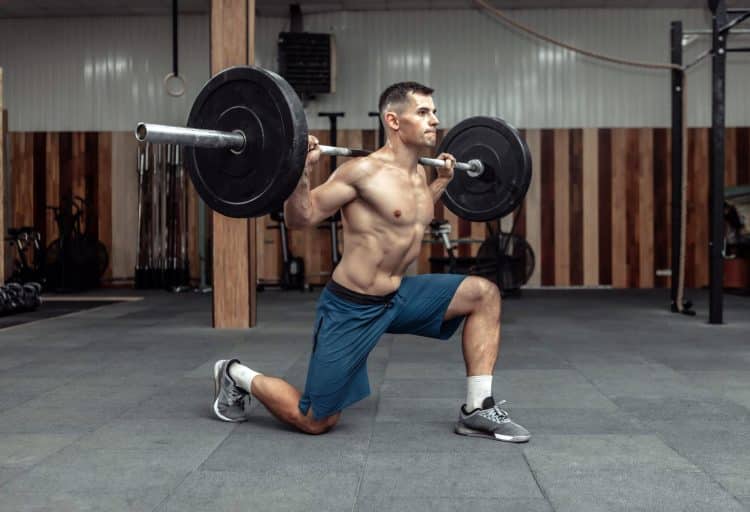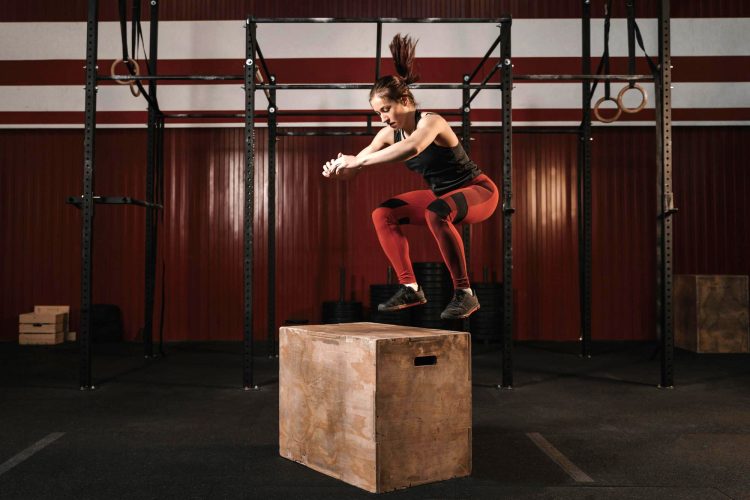Most of us overestimate our fitness levels. While some believe they are in top shape because they can run a 5K, others equate benching 315 pounds with peak fitness conditioning.
The truth is that both these scenarios tell us little about an individual’s overall physical fitness.
Fitness isn’t just about one thing; it’s the whole package. You’ve got to have strength, muscle mass, endurance, and agility. However, most people don’t have enough time to train for all four of these factors.
That’s where the Fitness Level 100 Challenge comes in.
Don’t get me wrong; this challenge doesn’t actually have 100 levels. This is a 10-stage challenge designed to push you beyond your limits and level up your overall fitness.
I have tried this challenge with several of my personal training clients, and it has delivered mind-blowing results every single time. This 100-level challenge involves performing progressively challenging exercises and increasing the volume and intensity with every phase.
Level Up Your Fitness: Join our 💪 strong community in Fitness Volt Newsletter. Get daily inspiration, expert-backed workouts, nutrition tips, the latest in strength sports, and the support you need to reach your goals. Subscribe for free!
In this article, I reveal my top-secret 10-step training program designed to boost overall fitness. We have a lot to unpack, so sit tight and read on.
The 10-Level Training Program
Achieving peak fitness conditioning is no joke. And contrary to what most people think, you cannot go from zero to 100 within a week. You must begin at the smallest level and work your way up. Doing too much too soon can be counterproductive and significantly increase injury risk.
Drawing from my 17 years of training and coaching experience, I have designed a 10-level approach to help maximize your results.
Each level has a unique objective, and I gradually increase the intensity and exercise complexity, allowing your body to adapt to the training program without hitting a plateau.
Here is the level breakdown:
| Phases | Levels | Objectives |
| Phase 1 | Levels 1-3 | Building a Foundation |
| Phase 2 | Levels 4-6 | Adding Intensity |
| Phase 3 | Levels 7-9 | Pushing Limits |
| Phase 4 | Levels 10 | Conquering the Peak |
Level 1: Finding Your Footing
Let’s now get into the nitty-gritty of this challenge. Listed below are 10 tables, one for each level, with suitable exercises and training intensity. All these workouts are circuit workouts, meaning you must move from one exercise to the next with minimal rest.
In the first level workout, you’ll be doing two rounds of the entire circuit.
| Exercise | Reps | Rest |
| Squats | 10 | 30 seconds |
| Push-ups | As many as possible (AMRAP) | 30 seconds |
| Lunges (each leg) | 10 | 30 seconds |
| Plank | 30 seconds | 30 seconds |
Level 2: Stepping It Up
Whether you’re trying to build a foundation, push your limits, or conquer the peak, you cannot do it in a single workout. You must stick to each workout for at least a week to get the best bang for your buck.
The first phase is all about building a solid foundation with bodyweight exercises. Prioritise using an optimal technique to drill the movement mechanics.
We introduce plyometrics in the second level, which involves explosive movements to build power and strength. Feel free to switch the incline push-ups with the conventional variation or clap push-ups, depending on your experience level. (1)
Do two rounds of the following circuit workout:
| Exercise | Reps | Rest |
| Jump Squats | 8 | 30 seconds |
| Incline Push-ups | AMRAP | 30 seconds |
| Walking Lunges | 12 | 30 seconds |
| High Plank | 45 seconds | 30 seconds |
Level 3: Building Momentum
This is the final week of the first phase, and we must prioritize strength and muscle conditioning to prepare for the next week. To do this, you’ll be doing a greater number of sets and reps.
More experienced trainers can add a weighted vest to the jump squats, decline push-ups, and switch the walking lunges with jumping alternating lunges.
You must constantly monitor your progress and make adjustments to your training regimen depending on how you feel and your recovery.
Perform three rounds of the following circuit:
| Exercise | Reps | Rest |
| Jump Squats | 10 | 30 seconds |
| Decline Push-ups | AMRAP | 30 seconds |
| Walking Lunges | 15 | 30 seconds |
| High Plank with Shoulder Taps | 45 seconds | 30 seconds |
Level 4: Adding Weight to the Equation
The fourth week marks the beginning of the intensity phase. Level four also introduces additional resistance, via dumbbells, to the training program. Ensure that you are using a weight that allows you to maintain an optimal form. Lifting too heavy can compromise technique and significantly increase injury risk.
Complete two circuits:
| Exercise | Reps | Rest |
| Dumbbell Thrusters | 10 | 30 seconds |
| Dumbbell Bench Press | 10 | 30 seconds |
| Dumbbell Rows | 10 (each side) | 30 seconds |
| Dumbbell Bicep Curls | 10 | 30 seconds |
Level 5: Embrace the Burn
In contrast to what most people think, you don’t need to do new exercises daily or every week to make consistent gains. However, you must ensure progressive overload by doing more sets and reps, using heavier weights, or limiting rest duration between sets.
The fifth-week workout does just this. You’ll be doing three rounds instead of two and performing more reps in each exercise.
Execute three rounds of this circuit:
| Exercise | Reps | Rest |
| Dumbbell Thrusters | 12 | 30 seconds |
| Dumbbell Bench Press | 12 | 30 seconds |
| Dumbbell Rows | 12 (each side) | 30 seconds |
| Dumbbell Hammer Curls | 12 | 30 seconds |
Level 6: Plyometrics and Power
There is a lot happening in the final week of the second phase.
Level Up Your Fitness: Join our 💪 strong community in Fitness Volt Newsletter. Get daily inspiration, expert-backed workouts, nutrition tips, the latest in strength sports, and the support you need to reach your goals. Subscribe for free!
You’ll be adding explosive exercises like box jumps and burpees and compound movements like RDLs. Finally, you’ll also be doing some isolation work to achieve that coveted muscle definition and mass.
Do two rounds of this circuit:
| Exercise | Reps | Rest |
| Box Jumps | 8 | 30 seconds |
| Burpees | 10 | 30 seconds |
| Dumbbell Romanian Deadlifts (RDLs) | 10 | 30 seconds |
| Dumbbell Tricep Extensions | 10 | 30 seconds |
Level 7: Mastering Your Bodyweight
While the second phase could be considered a minor bump up, the third face is a big leap. The seventh week involves complex bodyweight exercises like pistol squats and handstand holds.
These are high-skill movements that need a ton of practice. Beginners can switch them with assisted pistol squads or conventional air squats and wall-assisted handstand holds. These movements will also test your core stability and balance, which are incredibly important for achieving peak fitness conditioning.
Complete three rounds:
| Exercise | Reps | Rest |
| Pull-ups | AMRAP | 45 seconds |
| Dips | AMRAP | 45 seconds |
| Pistol Squats (each leg) | 5 | 45 seconds |
| Handstand Hold | 30 seconds | 45 seconds |
Level 8: HIIT It Hard
The eighth week is all about high-intensity interval training (HIIT). It will push your cardio system as it involves alternating between short bursts of intense exercise and brief rest periods. These are also great for burning excess body fat and toning your muscles.
Ensure that you are not going through the motions for the sake of it. Focus on performing each rep with a picture-perfect form for optimal gains.
As we get closer to the final level, you’ll be doing three rounds of each circuit:
| Exercise | Reps/Time | Rest |
| Kettlebell Swings | 30 seconds | 15 seconds |
| Battle Ropes | 30 seconds | 15 seconds |
| Mountain Climbers | 30 seconds | 15 seconds |
| Sprints | 30 seconds | 15 seconds |
Level 9: The Ultimate Test
The final week of the third phase can be very demanding as it combines strength training and HIIT. You’ll open the workout with an Olympic lift, clean and press, then transition to barbell thrusters, which are full-body exercises that require coordination, balance, and strength.
Toes-to-bar is one of the most challenging core exercises that require full body coordination and a strong midline. You’ll end the workout on the rowing machine in an all-out effort to burn as many calories as possible.
Perform three rounds:
| Exercise | Reps/Time | Rest |
| Clean and Press | 8 | 20 seconds |
| Barbell Thrusters | 10 | 20 seconds |
| Toes-to-Bar | AMRAP | 20 seconds |
| Rowing Machine | 30 seconds | 20 seconds |
Level 10: Conquering the Peak
The final phase has just one workout and level, which tells you the importance of this week.
Level 10 is the ultimate test of your fitness and will ascertain if you have achieved peak fitness conditioning.
Muscle-ups demand incredible upper body strength, burpee box jumpovers combine plyometrics, and agility, kettlebell snatches build explosive power, and the assault bike will push your cardio limits.
Once you can complete this workout with maximum intensity, you can rest assured that you have conquered the Fitness Level 100 challenge.
| Exercise | Sets | Reps/Time | Rest |
| Muscle-ups | 3 | AMRAP | 30 seconds |
| Burpee Box Jump Overs | 3 | 10 | 30 seconds |
| Kettlebell Snatches (each arm) | 3 | 10 | 30 seconds |
| Assault Bike | 3 | 30 seconds | 30 seconds |
The Importance of Rest
Achieving peak fitness performance can be an enticing proposition, and many people go overboard with their training frequency and volume. You must remember that you break down muscle tissue while you’re exercising. These muscles grow bigger and stronger when you’re resting and eating a balanced diet.
Here are a few factors that you must consider while following this 10-week program:
- Stick to the prescribed rest time to maximize muscle stimulation.
- This is a six-day-a-week program. Use the day off for active recovery, which involves swimming, hiking, self-myofascial release, etc.
- Sleep at least eight hours each night to give your muscles ample time to rebuild.
- Eat a balanced diet comprising protein, carbs, and healthy fats.
- Drink a gallon of water daily to avoid dehydration and decreased performance.
Assessing Your Fitness Level To Measure Physical Fitness and Endurance
Before you dive into the Fitness Level 100 Challenge, you need to know where you stand currently. This will allow you to modify the workouts according to your unique needs. Below is a quick self-assessment to gauge your starting point:
Strength:
- Can you perform 10 push-ups with proper form?
- Are you able to do five pull-ups without kipping?
- Can you squat your body weight for 10 reps?
- Is your core strong enough to hold a 60-second plank?
Cardio:
- Can you run a mile without any breaks?
- Are you capable of comfortably jogging for 30 minutes?
- Can you sprint for 30 seconds without feeling completely winded?
Flexibility:
- Are you flexible enough to touch your toes without bending your knees?
- Can you reach your arms overhead and comfortably clasp your hands together?
- Can you rotate your torso 90 degrees to each side?
Recovery:
- Do you generally feel rested and recovered after a workout?
- Do you experience any persistent aches or pains?
- How many hours of sleep do you get each night?
If your answer is a ‘yes’ to most of these questions, you have a decent starting fitness level. On the flip side, you might want to scale down these workouts to better suit your current conditioning.
Learn To Listen To Your Body
The exact programming for you can vary on multiple factors, including your age, gender, training experience, genetics, and objectives. Feel free to alter the program depending on your preferences. Beginners can use assistance in exercises like muscle-ups, whereas advanced trainers can challenge themselves with heavier weights, higher reps, and shorter rest periods.
Discontinue a workout if something feels weird or unnatural, and consult your healthcare provider if you experience pain or discomfort that refuses to fade away.
Plus, it is absolutely okay to take an additional day off from training if you’re feeling sore or fatigued. Going all-out in each workout without optimal recovery significantly increases injury risk.
Mental Toughness
Make no mistake, this 10-week workout challenge won’t be a walk in the park. It will test your limits and push you to the point where you’ll want to quit. However, you must tame your burning muscles and screaming lungs and stick with this training program to achieve the physique of your dreams.
Conclusion
The Fitness Level 100 challenge is a marathon and not a sprint. I’ve listed a detailed 10-week training program that is easy to follow and will target every muscle group from different angles, ensuring overall development.
Start small and increase the training volume and intensity as you gain more experience. The key here is to put in consistent effort and stay disciplined, and the results will follow.
If you have any questions about the different fitness levels explained in this article or need help implementing them into your routine, post them in the comments below, and I’ll be happy to help!
References:
- Sedano, S., Matheu, A., Redondo, J. C., & Cuadrado, G. (2011). Effects of plyometric training on explosive strength, acceleration capacity and kicking speed in young elite soccer players. The Journal of sports medicine and physical fitness, 51(1), 50–58.














